How do you make a good product?
Part 5: Synthesis
Let’s take a moment to consider the magic that is synthesis. Synthesis is my favorite part, because it’s where clarity is produced. It’s also the toughest part, in that it’s the hardest thing to measure and takes the most work to justify. It’s wiggly and has plenty of risk, and so it takes hard work and intentionality to produce something with confidence.
The purpose of synthesis is to take all of the data gathered during the research process and transform it into actionable knowledge. There are some steps to get there.
There’s a model of cognizance that breaks down stuff people can understand into four groups: data, information, knowledge, and wisdom.
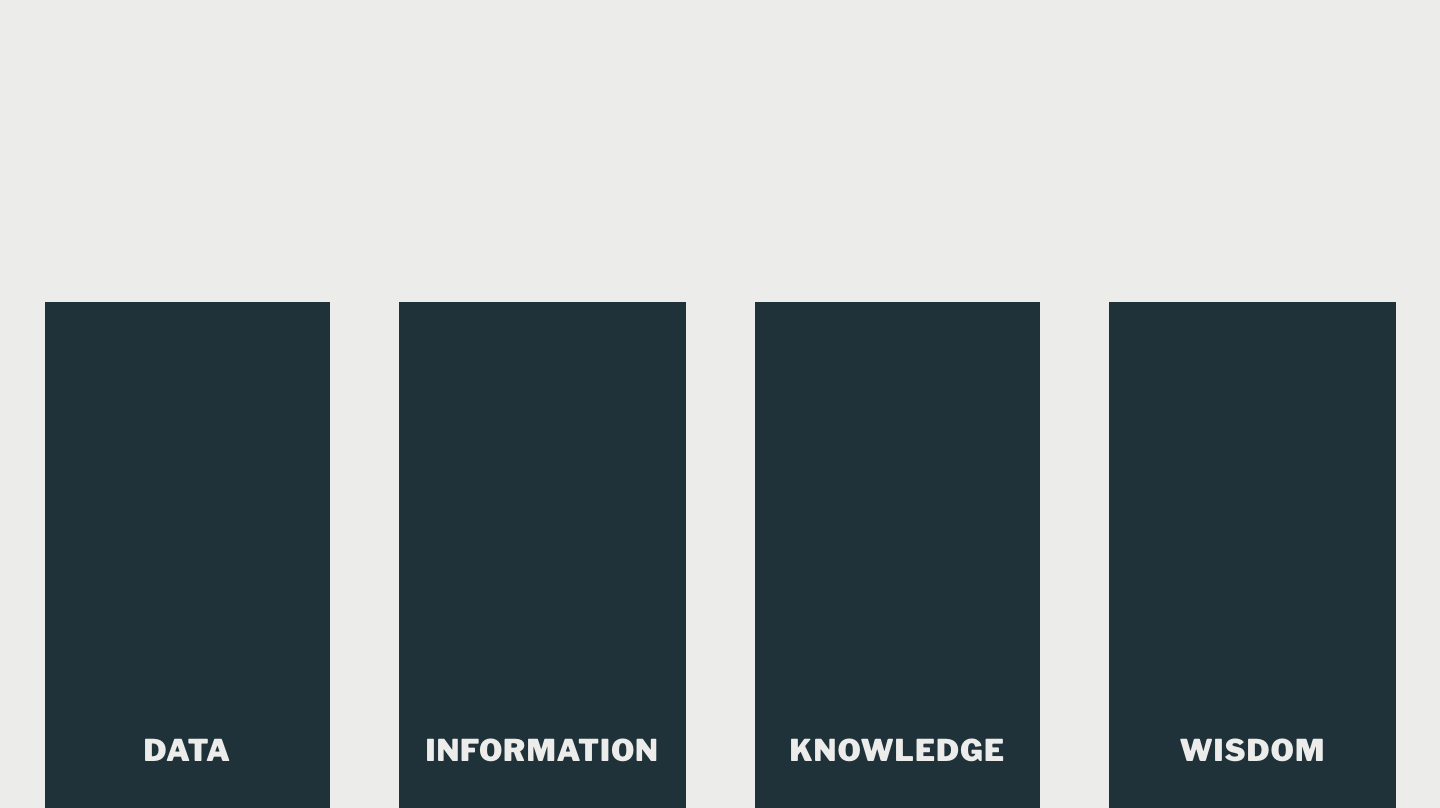
Between each of these groups is a gap. It requires intentionality to fill those gaps. Synthesis provides that intentionality with particular methodologies and processes.
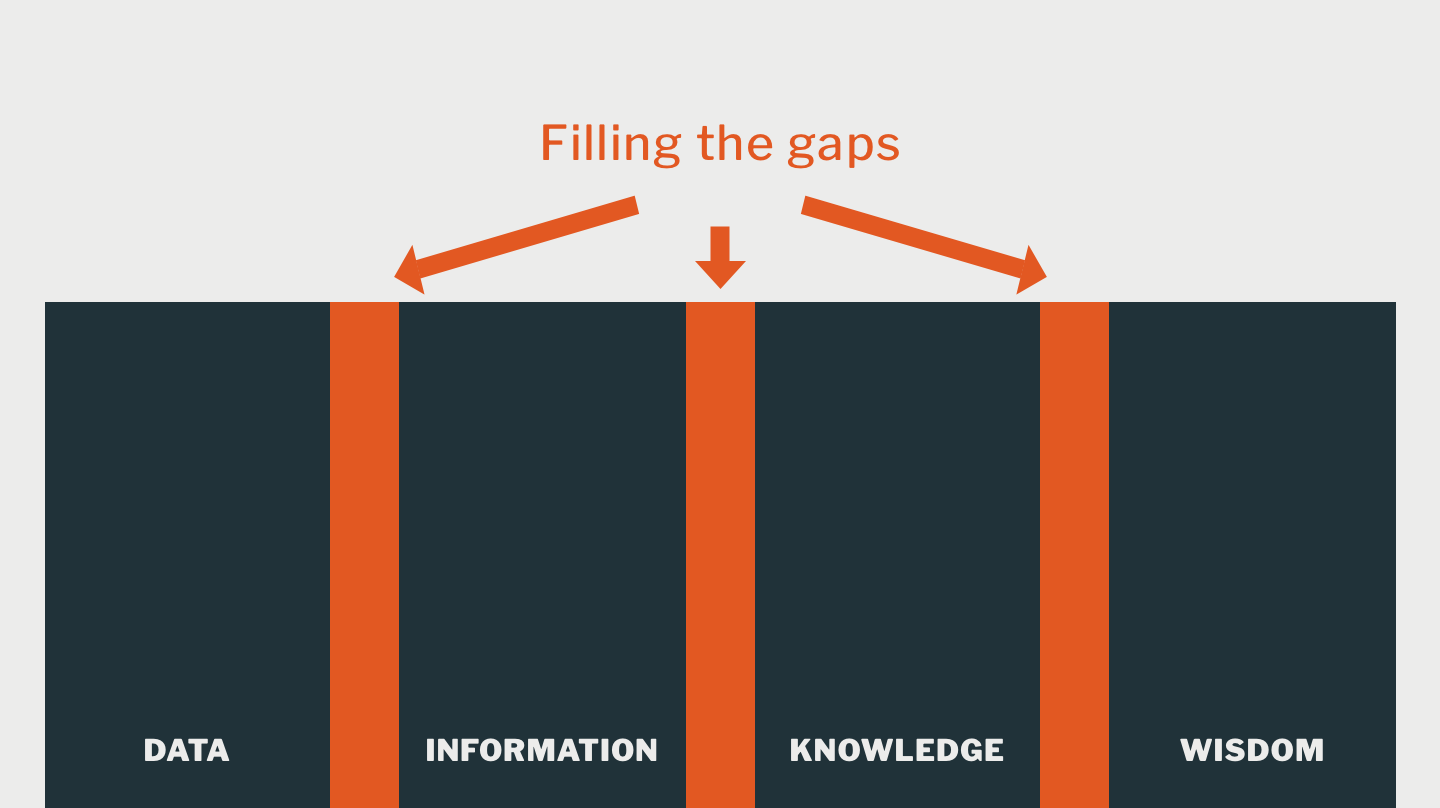
This model starts with data. Data is easily understood. Any facts or statistics, without any context, is data.
Information is simply organized data. Any time we line up data in a table or a diagram of some kind, or prioritize data points, we create information.
So creating information is simply making meaning out of that data. That can come in the form of data tables, maps, or process/workflow diagrams, among others. The point is to find some way of grounding your data in some form of organization to provide priority and the potential for insights.
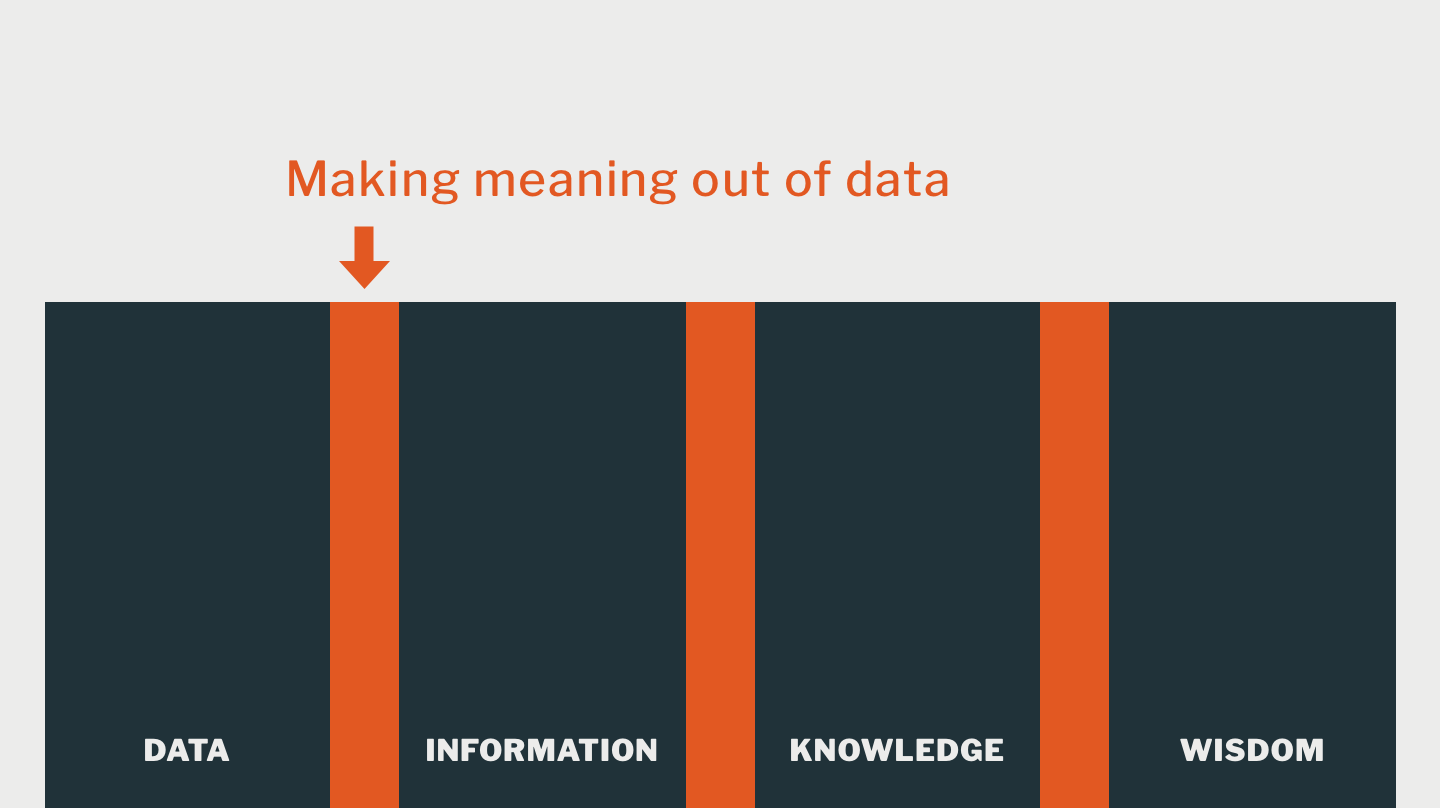
Going from information to knowledge is a little different. First, we should understand what exactly knowledge is. Many people smarter than me have tackled this:
Knowledge transforms “information into instructions.”
Ackoff, International Society for General Systems Research
Knowledge is like the recipe that lets you make bread out of the information-ingredients of flour and yeast (with data as the atoms of the ingredients).
Zeleny
Knowledge is the combination of data and information, to which is added expert opinion, skills and experience, to result in a valuable asset which can be used to aid decision making.
European Committee for Standardization, Guide to Good Practice in Knowledge Management
But my favorite definition comes from Plato:
How do we know we’re justified in believing something? Generally, that’s from experience. So generally, my definition is:
So then what is experience?
AN experience refers to a time period of things happening with a beginning and end. You are having an experience right now. An experience is something that happens to you, in all of your wonderful complexity and that is also affected by other people and natural events and forces and other designed artifacts. And former experiences affect and change you in all your wonderful complexity, which affects your future experiences in turn.
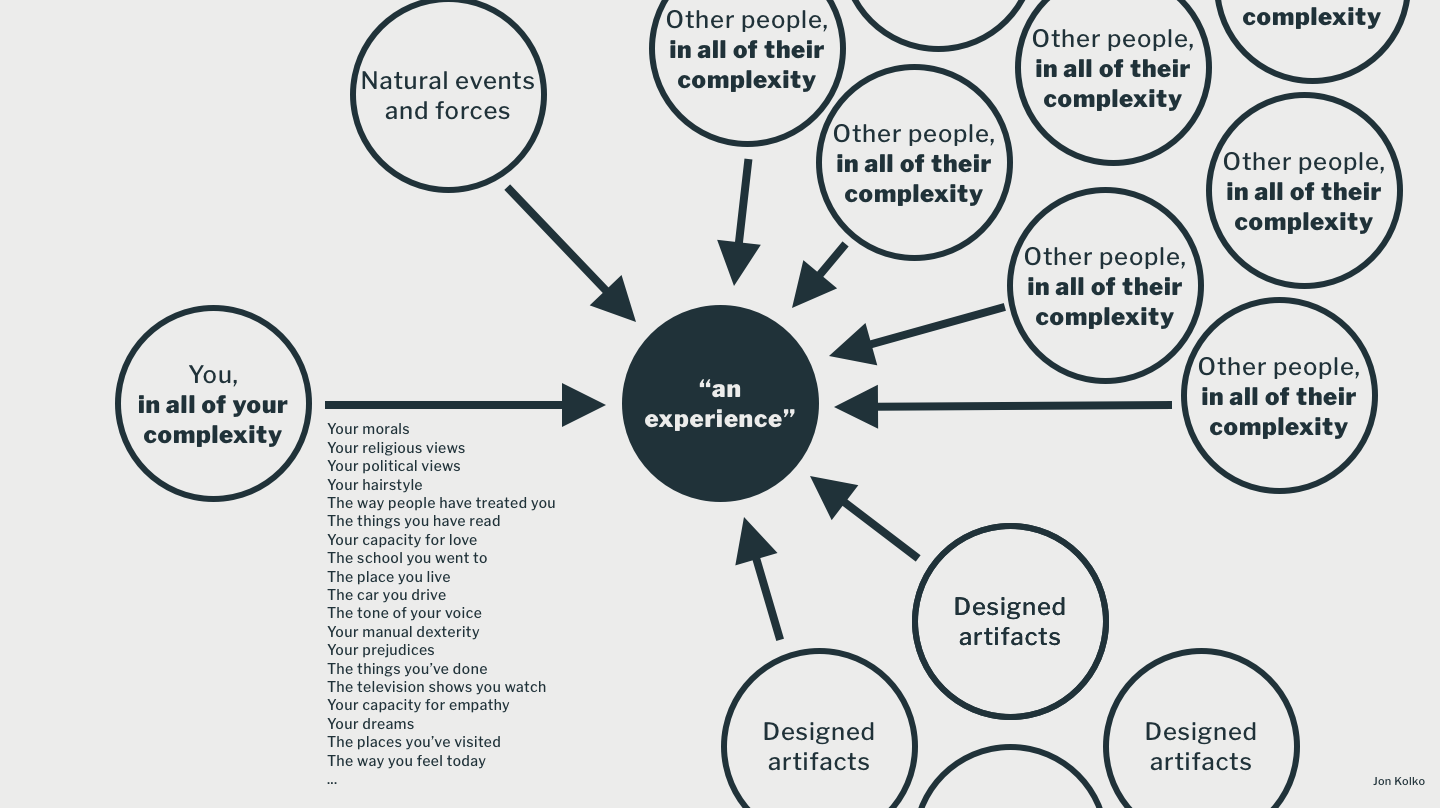
Experience refers to the constant stream of inputs, outputs, processing, awareness, and “self talk” that occurs during conscious life. People who spend a lot of time on a job get a lot of experience. It’s hard to transfer this experience to people. Anyone who has onboarded onto a project with a team that’s been there a while knows what I’m talking about here.
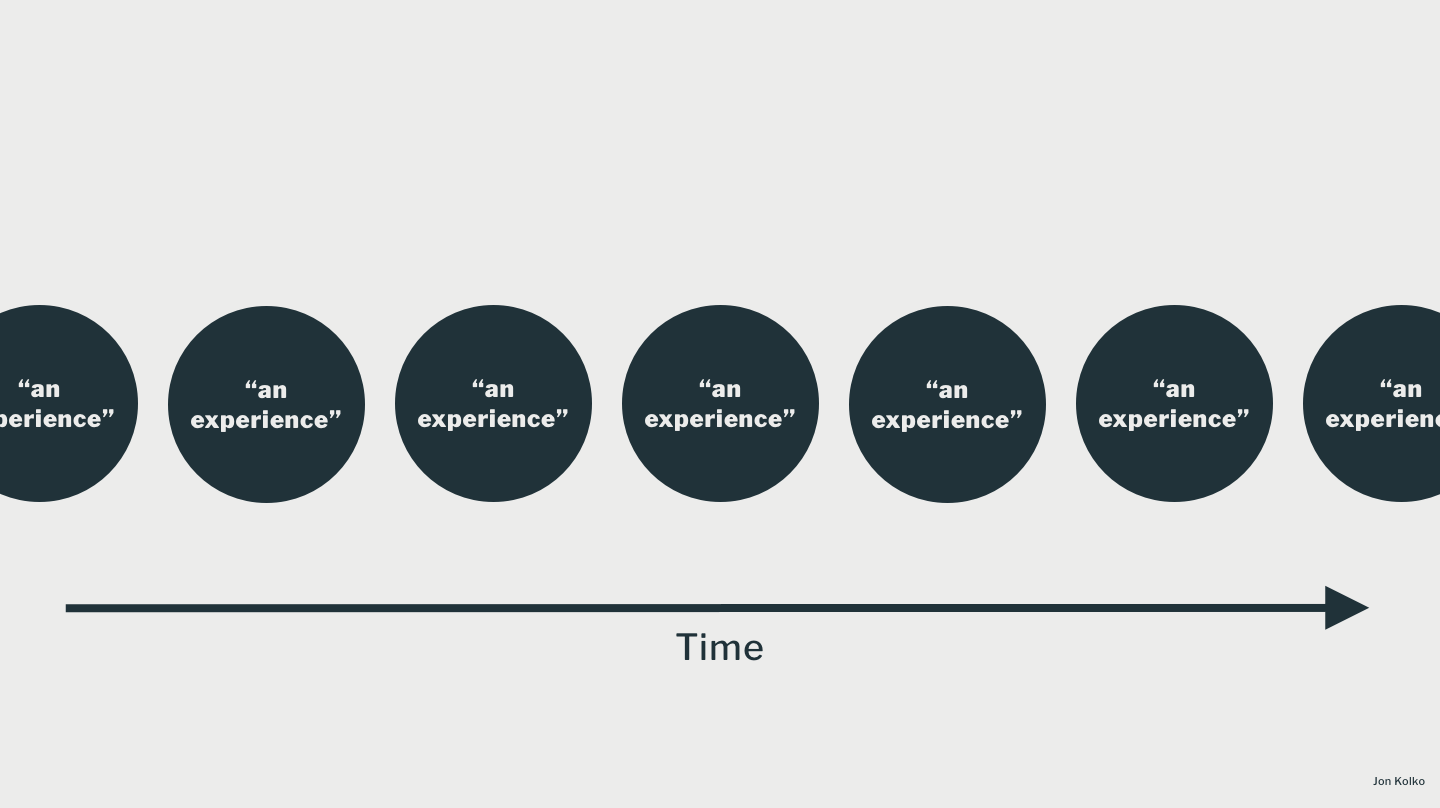
But part of our job as designers is to get experienced as quickly and painlessly as possible. So how do we do this?
I have some techniques that I use that I put under “experience scaffolding.” The idea here is that we’re supposed to get a sense of the experience that the client has without building out all the details, much like if you put up the scaffolding of a building you get a sense of the size of the building, without actually building it.
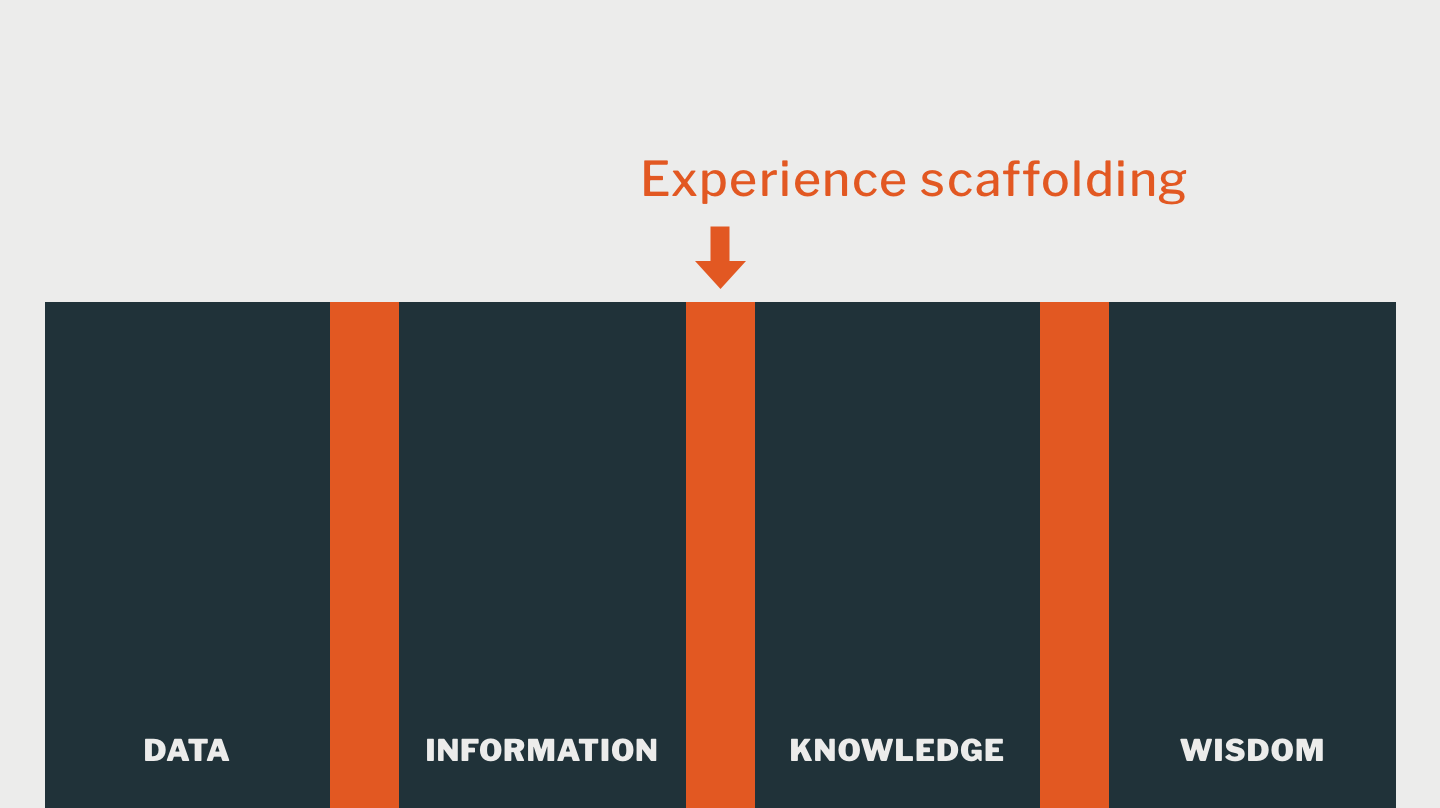
So when we do these things, we start to get a sense of these people’s experience. And when we do that, we start to appreciate them in a new way. Maybe before we thought they were just lazy or inefficient, and afterward we see them in a new light. And so now we empathize with them. And that’s how we get from knowledge to wisdom.

In this context, I define wisdom as prioritized knowledge. It’s hard to get to this point, but when you do, when you can look at the process you’ve adopted and lay out why you’ve gone down this road and not another, it provides confidence that you will be able to build a product that is useful and worth the time of your customers. And that’s a good place to be.